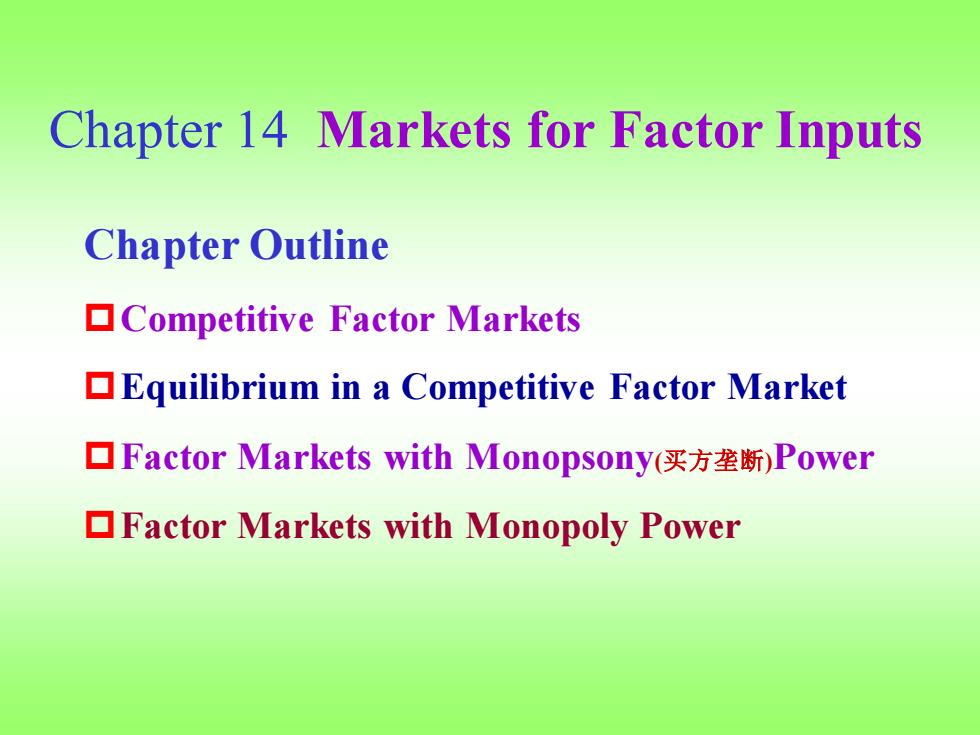
Chapter 14 Markets for Factor Inputs Chapter Outline Competitive Factor Markets Equilibrium in a Competitive Factor Market ▣Factor Markets with Monopsony(买方垄断)Power Factor Markets with Monopoly Power
Chapter 14 Markets for Factor Inputs Chapter Outline Competitive Factor Markets Equilibrium in a Competitive Factor Market Factor Markets with Monopsony(买方垄断)Power Factor Markets with Monopoly Power

14.1 Competitive Factor Markets Derived demand-Demand for an input that depends on, and is derived from,both the firm's level of output and the cost of inputs. ▣Marginal revenue product(边际收益产出)-Additional revenue resulting from the sale of output created by the use of one additional unit of an input
14.1 Competitive Factor Markets Derived demand - Demand for an input that depends on, and is derived from, both the firm’s level of output and the cost of inputs. Marginal revenue product(边际收益产出)-Additional revenue resulting from the sale of output created by the use of one additional unit of an input
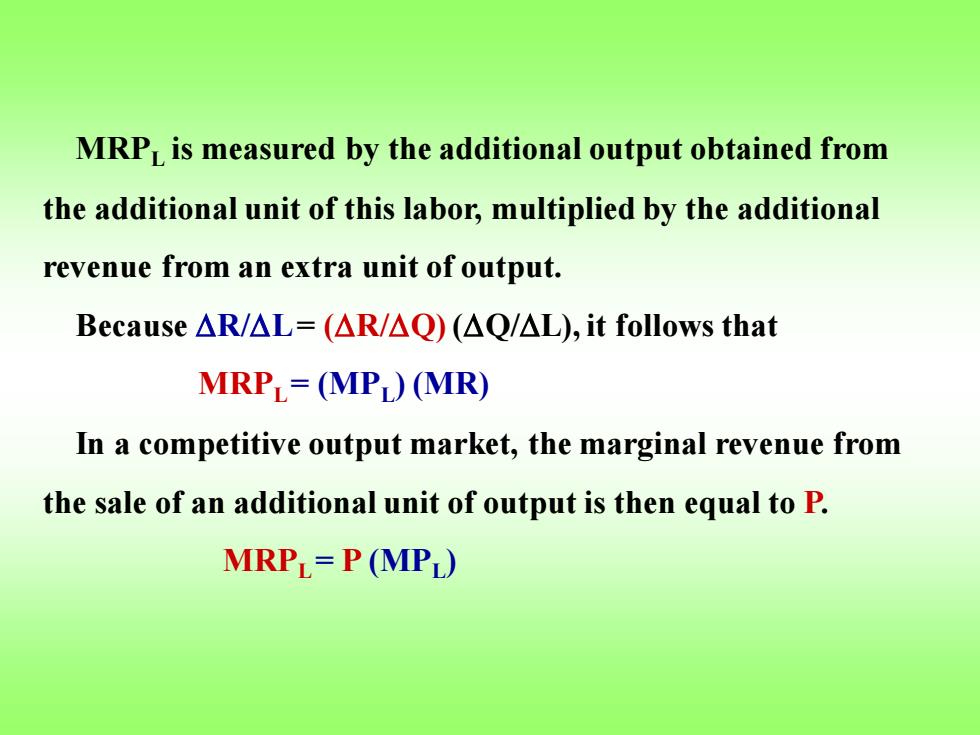
MRPL is measured by the additional output obtained from the additional unit of this labor,multiplied by the additional revenue from an extra unit of output. Because△R/△L=(△R/△Q)(△Q/△L),it follows that MRPL=(MPL)(MR) In a competitive output market,the marginal revenue from the sale of an additional unit of output is then equal to P. MRPL=P(MPL)
MRPL is measured by the additional output obtained from the additional unit of this labor, multiplied by the additional revenue from an extra unit of output. Because R/L= (R/Q) (Q/L), it follows that MRPL = (MPL) (MR) In a competitive output market, the marginal revenue from the sale of an additional unit of output is then equal to P. MRPL = P (MPL)
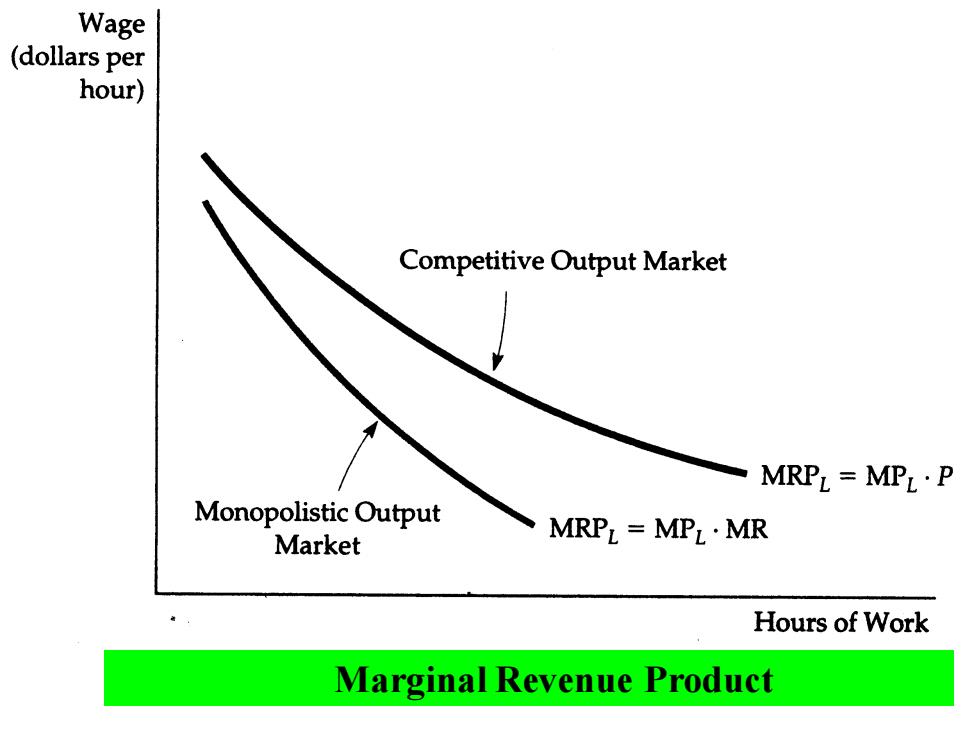
Wage (dollars per hour) Competitive Output Market MRPL=MPL·P Monopolistic Output Market MRPL=MPL·MR Hours of Work Marginal Revenue Product
Marginal Revenue Product

In a competitive factor market in which the producer is a price taker,the buyer's demand for an input is given by the marginal revenue product curve. The MRP curve falls because the marginal product of labor falls as hours of work increase.When the producer of the product has monopoly power,the demand for the input is also given by the MRP curve.In this case,however,the MRP curve falls because both the marginal product of labor and marginal revenue fall
In a competitive factor market in which the producer is a price taker, the buyer's demand for an input is given by the marginal revenue product curve. The MRP curve falls because the marginal product of labor falls as hours of work increase. When the producer of the product has monopoly power, the demand for the input is also given by the MRP curve. In this case, however, the MRP curve falls because both the marginal product of labor and marginal revenue fall
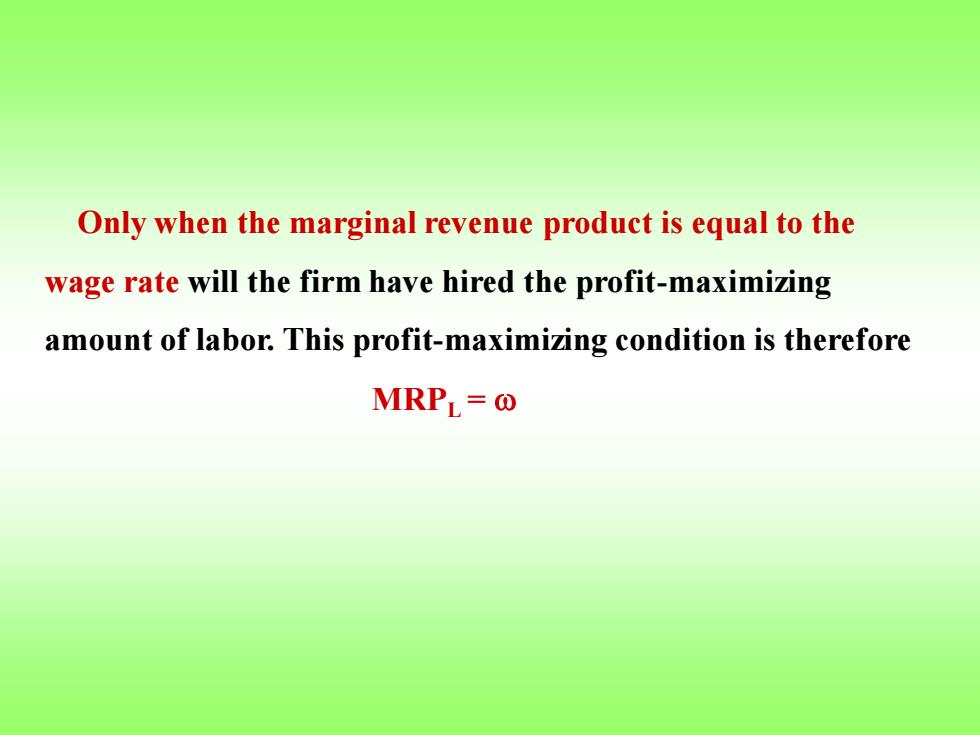
Only when the marginal revenue product is equal to the wage rate will the firm have hired the profit-maximizing amount of labor.This profit-maximizing condition is therefore MRPL=0
Only when the marginal revenue product is equal to the wage rate will the firm have hired the profit-maximizing amount of labor. This profit-maximizing condition is therefore MRPL =
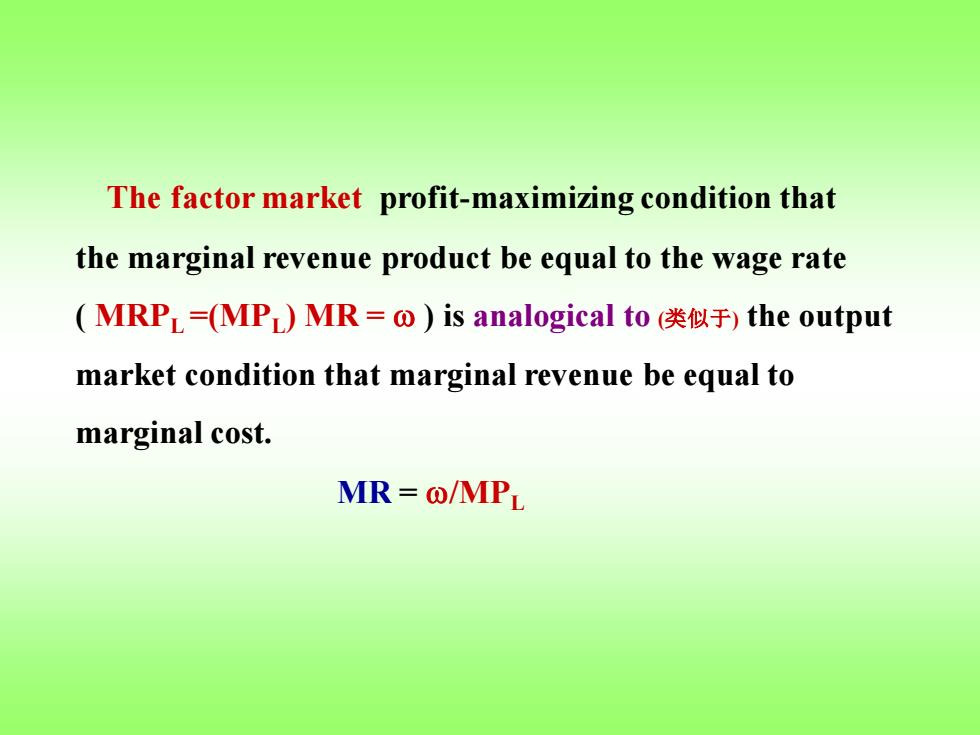
The factor market profit-maximizing condition that the marginal revenue product be equal to the wage rate (MRPL=(MP)MR=o)is analogical to(偻似于)the output market condition that marginal revenue be equal to marginal cost. MR=0/MPL
The factor market profit-maximizing condition that the marginal revenue product be equal to the wage rate ( MRPL =(MPL) MR = ) is analogical to (类似于) the output market condition that marginal revenue be equal to marginal cost. MR = /MPL
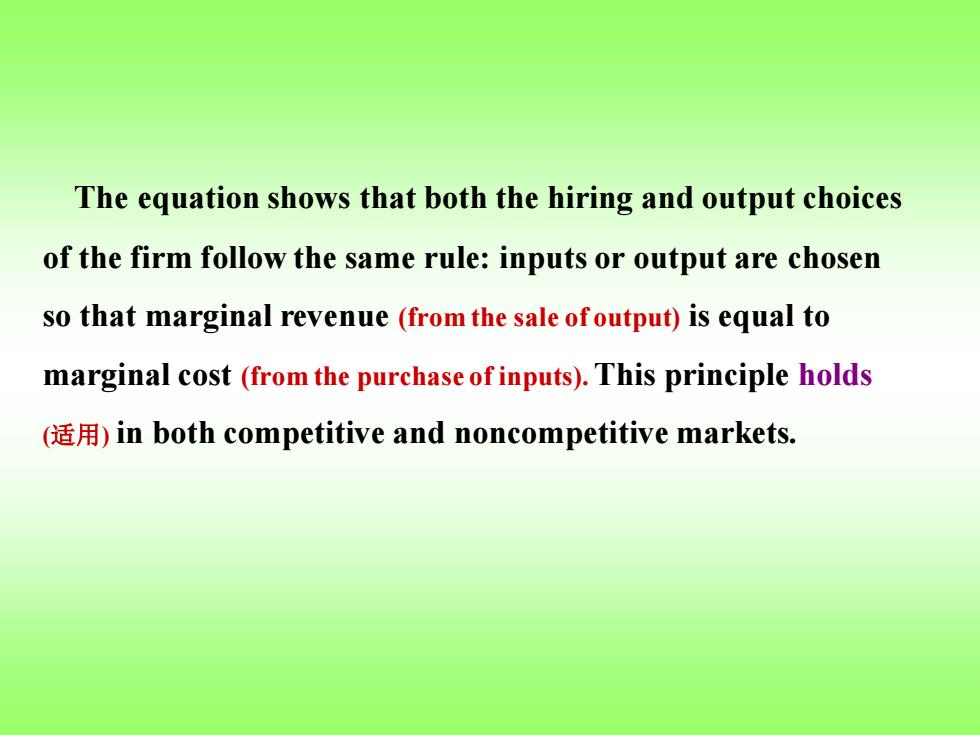
The equation shows that both the hiring and output choices of the firm follow the same rule:inputs or output are chosen so that marginal revenue(from the sale of output)is equal to marginal cost(from the purchase of inputs).This principle holds (in both competitive and noncompetitive markets
The equation shows that both the hiring and output choices of the firm follow the same rule: inputs or output are chosen so that marginal revenue (from the sale of output) is equal to marginal cost (from the purchase of inputs).This principle holds (适用) in both competitive and noncompetitive markets

Price of Labor 0¥ SL MRPL=DL L* Quantity of Labor Hiring by a Firm in the Labor Market (with Fixed Capital)
Hiring by a Firm in the Labor Market (with Fixed Capital)

In a competitive labor market,a firm faces a perfectly elastic supply of labor SL and can hire as many workers as it wants at a wage rate w*. The firm's demand for labor D is given by its marginal revenue product of labor MRPL.The profit-maximizing firm will hire L* units of labor at the point where the marginal revenue product of labor is equal to the wage rate
In a competitive labor market, a firm faces a perfectly elastic supply of labor SL and can hire as many workers as it wants at a wage rate w*. The firm's demand for labor DL is given by its marginal revenue product of labor MRPL . The profit-maximizing firm will hire L* units of labor at the point where the marginal revenue product of labor is equal to the wage rate